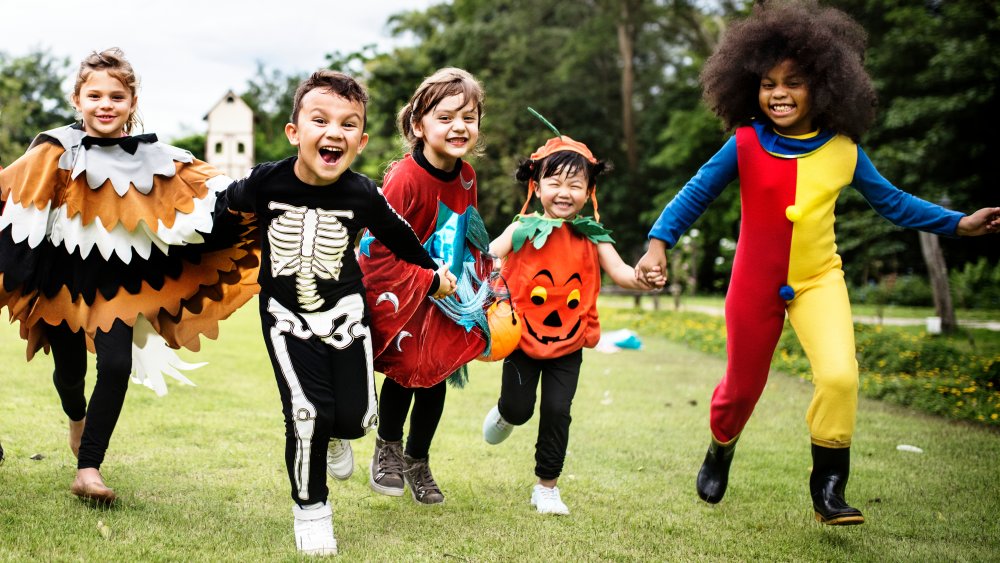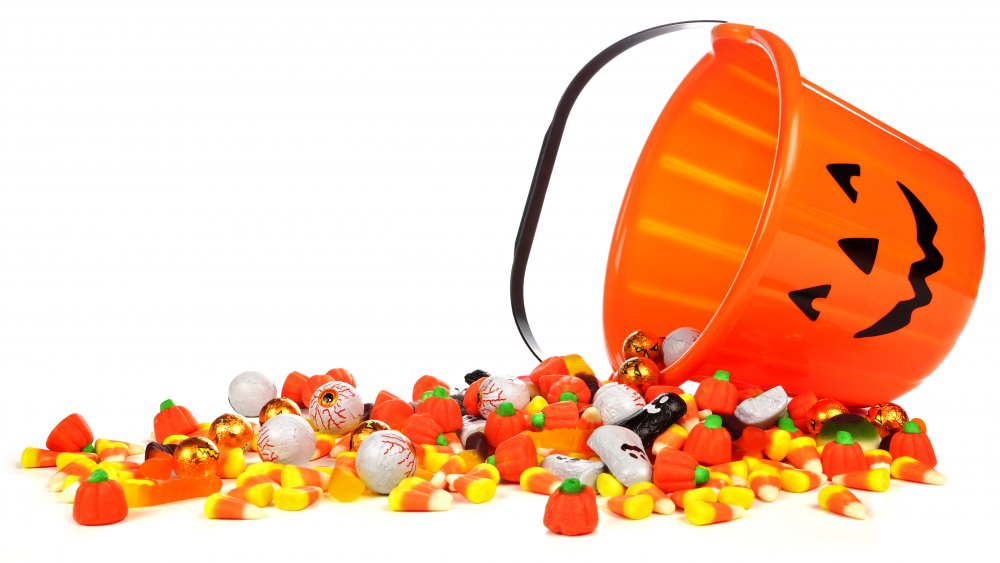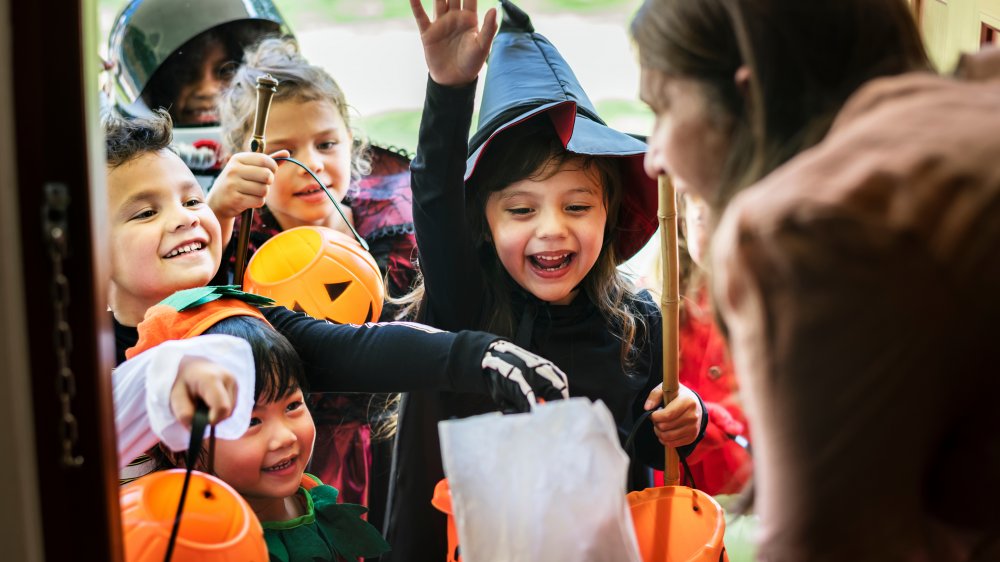The Real Reason We Give Out Candy On Halloween
You might have been seeing the memes from your friends, starting around, say, November 1 — "Only 365 days until Halloween!" Besides its usage on a string of slasher movies, the word denoting the holiday is part and parcel of American culture. It dates back to Colonial times, right? Well, yes. Also no.
The best guess anyone dares make is that Halloween is tied to harvest festivals, particularly samhain (pronounced SOW-in), a Celtic celebration dating back to pagan times. As the National Endowment for the Humanities explains, the pagan Celts marked four important harvest dates on their calendars — samhain being one, commencing on (roughly) October 31 each year. In addition to celebrating successful agriculture, there was a spiritual aspect to that time of year: "On the eve of Samhain, they believed the veil between the two realms was the most transparent, allowing the spirits of those who have died to return to visit earth." The arrival of Christianity in what's now Ireland saw the new religion try to create common ground between the old and the new, and samhain became tied with All Saints' Day on November 1; the day before, October 31, was christened (so to speak) "All Hallow's Eve" — Halloween, the eve of the holy ones.
The holiday has Celtic roots
The Irish were already dressing in costume (or disguise, if you prefer) for samhain, as a way to confuse any ghosties who might be on the hunt that night, Mental Floss tells us. Gifts of food would be left out on doorsteps — a way to appease any wandering spirits who, apparently, worked up an appetite as they scared the bejabbers out of the population.
The ghostly tradition of that time of year continued into the American Colonies — witness Washington Irving's "The Legend of Sleepy Hollow," with its Headless Horseman, published in 1820, involving a ghostly Hessian soldier from the Revolutionary War. The holiday morphed into a night of revelry and pranks, as well as borderline extortion — "give us a treat, or you'll get a trick," and nothing like making a card disappear, either. We'd probably call it "vandalism" today — tipping over outhouses was always a knee-slapper in those happy, carefree times.
It wasn't until the post-World War II era that tons of processed sugar entered into the equation.
Americans spent over $2 billion on Halloween candy last year
Candy companies had laid claim to Easter and Christmas as times of diabetes-inducing gifts, and there'd been an attempt to create "National Candy Day" for the early days of October. As the manufacturers were trying to come up with yet another reason to convince parents to spend way too much money on empty calories for their children, the suburbs arose, with a need for wholesome neighborhood activities. Instead of roaming about, looking for opportunities to damage property, children began to dress in costumes and go door to door, asking for treats (with the "trick" part left well and truly behind. Well, usually). At first the kiddies would be rewarded by, perhaps, a coin, or a piece of fruit, or some home-made goodie. And candy manufacturers saw gold in them thar 'burbs. Instead of going to all that trouble, why not buy pre-packaged treats? And smaller? You know — fun-sized? (Though as Strongbad pointed out, "What's fun about eating less candy?")
Today, relates Reader's Digest, 68 percent of Americans participate in the holiday. It's estimated that in 2019, the country spent somewhere around $2.6 billion (yes, with a B) on Halloween candy. The most popular? Skittles. On average, a child will collect between 3,500-7,000 calories' worth of treats, the approximate equivalent of 13 Big Macs, with only slightly less nutritional value. Surely they won't eat it all at once. Though they might try. And that is a truly scary thought.


